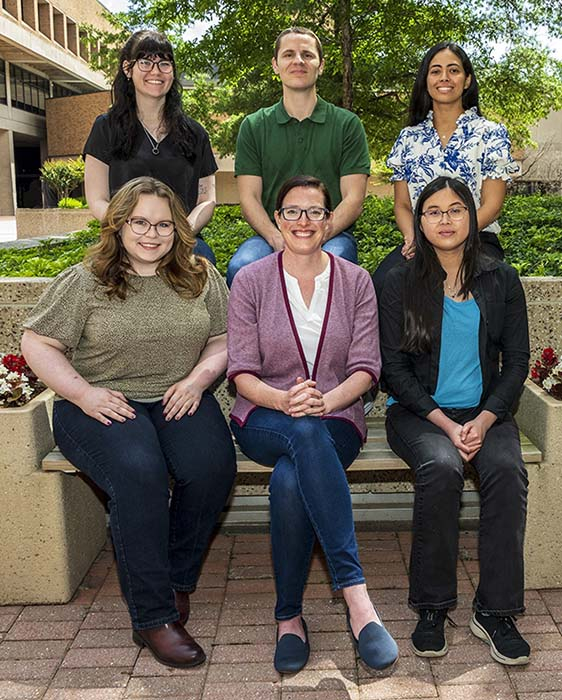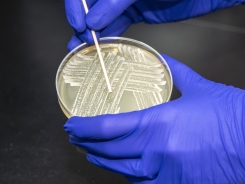THE PROBLEM
Maintenance of cellular health and function is an essential characteristic of life. For example, in response to external and internal stress, our cells rely upon the reprogramming of gene expression to restore core cellular processes back to a functional, stable state. When regulation of gene expression is impaired, such imbalances in cell “homeostasis” become a major driver of human disease. The overarching goals of the Young-Baird lab are to understand how (1) gene expression is regulated during cellular stress and (2) dysregulation of gene expression contributes to disease.
RESOURCES
Publication List
Dr. Sara Young-Baird’s BIO
|
Sara Young-Baird (Principal Investigator) Team members: Front Row (Left to Right): Lauren Haacke (Neuroscience Graduate Student), Sara Young-Baird (Principal Investigator), Alexi Misciagna (Research Assistant). Back Row (Left to Right): Megan Rasmussen (Molecular and Cell Biology Graduate Student), Anthony Erb (Molecular and Cell Biology Graduate Student), Ambar Rodriguez-Martinez (Molecular and Cell Biology Graduate Student). |
OUR APPROACH
We conduct mechanistic studies of human disease using a multidisciplinary set of powerful model systems including human patient derived induced pluripotent stem cells (iPSCs), neurons, various immortalized mammalian cell lines, and yeast. The group also employs cutting-edge technologies integrating next generation sequencing with molecular, biochemical, and structure-function studies.
OUR FINDINGS
The Young-Baird group recently found that the process of protein synthesis (i.e., translation of messenger RNA to protein) is dysregulated in a severe neurological disorder, termed MEHMO syndrome. This dysregulation causes inappropriate activation of the cellular stress response, ultimately resulting in impaired cell growth, defective neuronal differentiation, and an increase in programmed cell death.
Current work in the lab focuses on characterization of the molecular signatures of MEHMO syndrome and related protein synthesis disorders. We are also interrogating the function of specific translation factors that help to regulate the cellular stress response and are linked to multiple cancers as candidate oncogenes.



